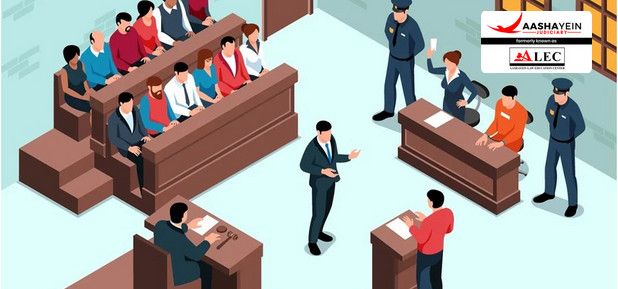“Handcuffing is prima facie inhuman and, therefore, unreasonable; it should be the last resort, not the first reflex." - Justice Krishna Iyer
Handcuffing has long been depicted in popular media as a symbol of arrest, but in legal terms, it has been a subject of scrutiny. Indian law has historically viewed handcuffing as a violation of personal dignity, with the judiciary emphasizing its use only in exceptional cases. Recent changes in the Bhartiya Nagarik Suraksha Sanhita,2023 (BNSS) law, however, grant broader powers to the police, sparking concerns about human rights and judicial safeguards.
Background: Judicial Guidelines on Handcuffing
Indian courts have consistently ruled that handcuffing should not be routine but reserved for extreme situations. Some key judgments have outlined the conditions under which handcuffs can be used.
1. Prem Shankar Shukla v. Delhi Administration (1980)
The Court ruled that handcuffing should not be routine, especially for non-violent offenses, and must be justified with recorded reasons approved by a judge.
2. Sunil Batra v. Delhi Administration (1980)
The Court emphasized that restraints like handcuffs should only be used when there is a risk of escape or violence, not for convenience.
3. Citizens for Democracy v. State of Assam (1995)
The Court reinforced that handcuffing should only be used in exceptional cases, and police must seek judicial approval for its use.
4. Siddharam Satlingappa Mhetre v. State of Maharashtra (2011)
The Court ruled that handcuffing is a violation of constitutional rights unless there is a clear risk of escape or harm.
The Supreme Court has emphasized that handcuffs should be used sparingly and only in extreme situations to protect personal liberty under Article 21 of the Indian Constitution. The Court has made it clear that handcuffs are not to be used routinely but should be reserved for cases where there is a genuine threat.
You can also read the latest judgment by visiting [Latest Judgment].
For more information, visit [Aashayein Enquiry Section]
The New Legislative Shift: BNSS and Section 43(3)
The Bhartiya Nagarik Suraksha Sanhita,2023(BNSS) introduced Section 43(3), granting the police broader powers to use handcuffs during arrest or when presenting individuals in court. This new provision applies to repeat offenders, those involved in serious crimes like terrorism, organized crime, or violent offenses, and individuals with a history of escape.
This provision is seen as a shift from earlier legal norms, where judicial oversight was required before handcuffing.
Supreme Court Guidelines:
- Handcuffs Should Not Be Routine: They should only be used in exceptional cases, such as when the individual poses a risk.
- Judicial Oversight: Police must seek permission from a magistrate before using handcuffs, or at the very least, provide a justification after the fact.
- Vulnerable Groups: Vulnerable individuals, including women and children, should generally not be handcuffed unless there are compelling reasons.
BNSS and the Potential for Misuse
Section 43(3) of the BNSS raises concerns about its potential for misuse:
- Lack of Judicial Oversight: Unlike previous legal frameworks, the BNSS does not require judicial approval before handcuffing.
- Broad Discretion: The provision gives police significant discretion, especially regarding repeat offenders, without clearly defining who qualifies as a repeat offender.
- Impact on Vulnerable Groups: There are no specific exemptions for vulnerable groups, which could lead to the unnecessary use of handcuffs.
Conclusion: The Need for a Reassessment of Handcuffing Laws
The BNSS introduces a shift that empowers the police to use handcuffs more freely, which could undermine the protections for individual rights established in earlier rulings. The lack of judicial oversight and broad discretion granted to police raises concerns about potential human rights violations.
A balanced approach is needed, ensuring that the use of handcuffs is restricted to exceptional cases while safeguarding the rights and dignity of individuals during arrest and detention. The judiciary and law enforcement must work together to uphold the principles of justice, liberty, and dignity.

